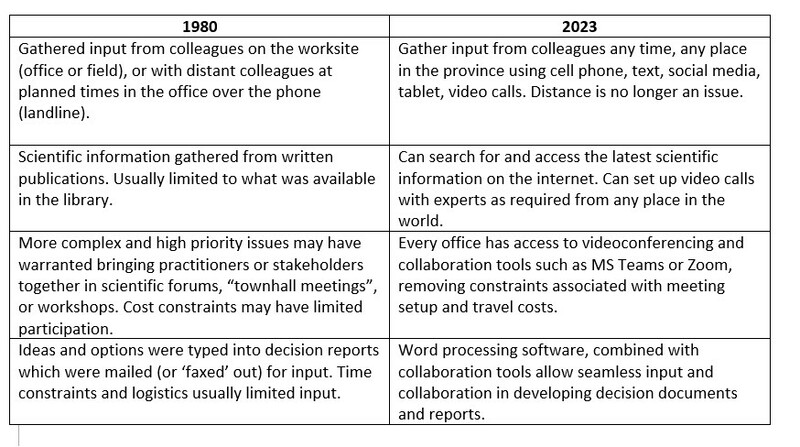e-Learning Ecologies MOOC’s Updates
Update #5 - Collaborative Intelligence
As a natural resource management professional, I have always needed to participate in some form of collaborative problem-solving. While the methods of collaboration have significantly advanced since I started working as a forestry professional in the 1980s, the concept of collaborative intelligence appears to still apply. Collaborative intelligence refers to a multi-agent, distributed system in which each agent, whether human or machine, contributes autonomously to a problem-solving network. [1]
Natural resource management involves complex decision-making related to the use of scarce resources, and the outcomes of these decisions have both short- and long-term effects on the sustainability of species, communities, and the broader environment. Since there is rarely a single "correct" answer when dealing with natural systems and human interactions, it has always been crucial for resource managers to consider alternatives based on the best available scientific evidence, stakeholder feedback, and input from experienced colleagues.
Looking back, I find it quite remarkable to compare my experience, specifically in British Columbia, Canada, with collaborative problem-solving methods before the advent of the internet, to the present-day approach utilized in my area of expertise. There have been notable advancements that have resulted in improved efficiency and facilitated greater access to shared knowledge and collective intelligence. Here are some instances of such changes.
With the natural environment and human communities under growing pressure from the impacts of climate change, there is an urgent requirement for collaboration to address increasingly complex challenges. Educational institutions will need to equip future practitioners with the skills and competencies required to enable effective collaboration in tackling these issues.
Footnotes
- ^ Collaborative intelligence - Wikipedia


.jpg?Expires=1764972944&Signature=GEBHqz4lOuk7YfYx7CNGMZW1VEsWVQrKm10FTjvwE0ZxjxxUcRwFd9V~bYBfLqILQwi0CRqp9h2R8tlsGU1dhSpTmA5~aFnzfO1ORVBTTJycat4nPg-kclpvqBtJpCmTf4rmSmkb7YknoN-9xdgSqV3y4bQ2jNFs7Vt~LTrIHBarEZHpYxI4Z8hxQkysPxr6kHF89SBab-78Xjl53aASOGFTAm6F0ytY~hYMcBVji7lXJc1LCSPt9cg47RbryplbWyjHB1UdPj8A3Ui8P~c0DU3r3IcJKChqnIbh3iY6zesl9Nutlqnrjj8NkWYfAKsCE-nZn5jBb-2fkUBJfHiDNw__&Key-Pair-Id=APKAJELYXGUCCDL7FUQA)


Well done